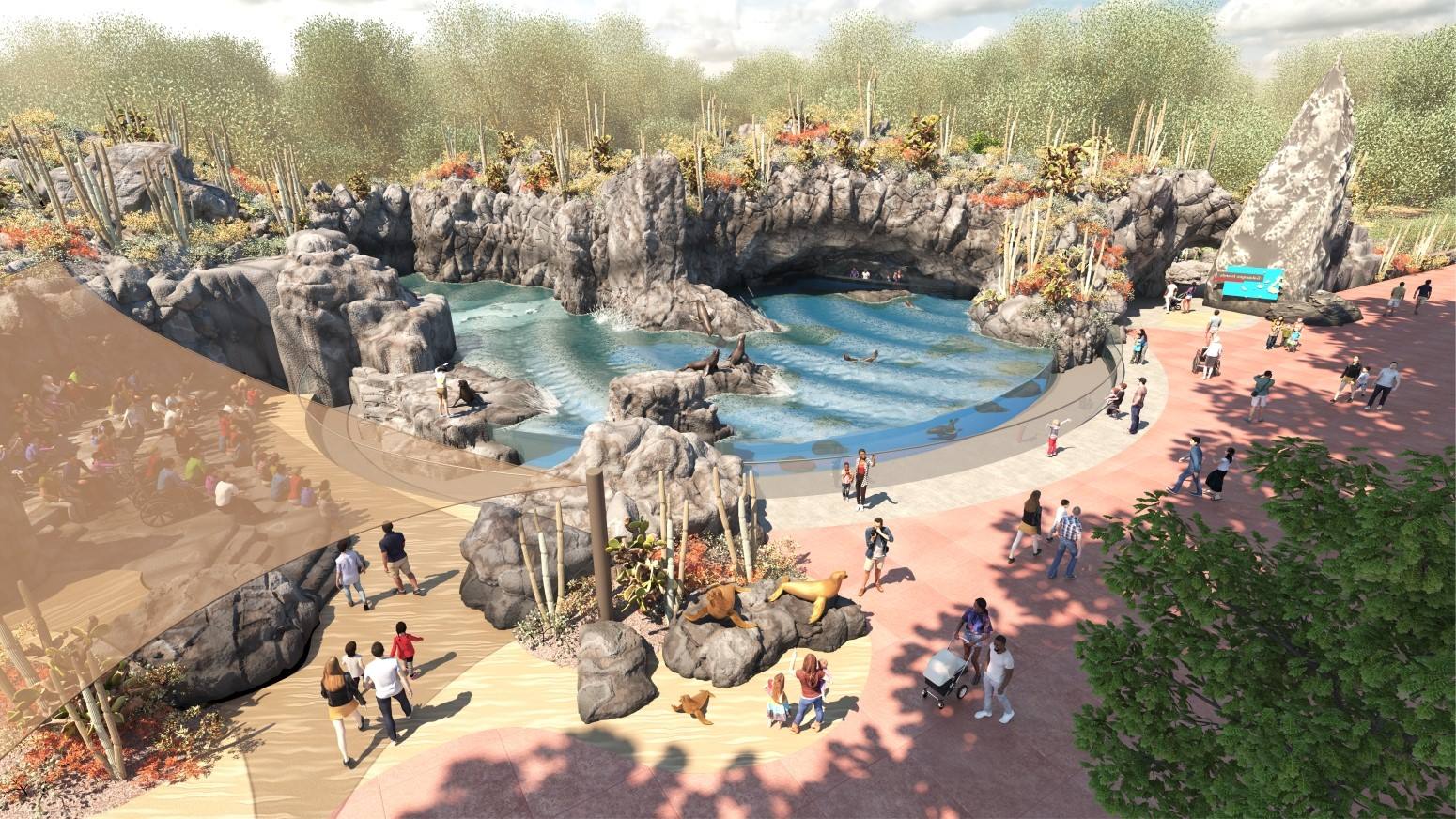
Zoo exhibits are more than just spaces where animals are kept; they're carefully designed environments that aim to replicate the natural habitats of the species they house. Zoo exhibits play a crucial role in conservation efforts, education, and providing visitors with the opportunity to learn about wildlife from around the globe. From the savannas of Africa to the tropical rainforests of South America, these exhibits take us on a journey to discover the diverse ecosystems our planet has to offer. But what goes into creating these exhibits, and how do they contribute to animal welfare and conservation? In this introduction, we'll uncover 17 fascinating facts about zoo exhibits that highlight their importance, innovation, and the challenges faced in creating environments that are both educational for visitors and nurturing for the animals.
What Makes Zoo Exhibits Unique?
Zoo exhibits are more than just spaces for animals to live; they're carefully designed environments that mimic the natural habitats of the species they house. This attention to detail ensures that animals feel at home, even while in captivity. Visitors get to experience and learn about wildlife from around the world in a single visit, making each exhibit a unique educational opportunity.
-
Zoo exhibits are crafted to replicate the natural environments of the animals, from the plants and rocks to the climate and layout. This meticulous design helps in the conservation efforts by providing animals with a habitat that supports their natural behaviors and needs.
-
Interactive elements are often incorporated into exhibits, allowing visitors to engage more deeply with the information presented. These can range from touch screens that provide detailed information about the animals to live demonstrations and feeding sessions.
How Do Zoos Benefit Conservation?
Zoos play a crucial role in the conservation of endangered species. Through breeding programs, research, and education, they contribute significantly to the survival of many species that might otherwise face extinction.
-
Breeding programs in zoos are vital for the preservation of genetic diversity among endangered species. These programs often involve international cooperation to ensure the health and viability of animal populations.
-
Zoos are involved in numerous research projects that aim to understand wildlife diseases, behavior, and reproductive biology. This research is essential for developing effective conservation strategies in the wild.
-
Educational programs offered by zoos raise awareness about the importance of conservation and inspire visitors to take action in their own lives. By learning about the challenges animals face in the wild, people are more likely to support conservation efforts.
The Evolution of Zoo Exhibits
Over the years, zoo exhibits have evolved from simple cages to complex habitats that prioritize the well-being of the animals. This shift reflects a growing understanding of animal needs and the importance of conservation.
-
Early zoo exhibits were often small and lacked the complexity of natural habitats, focusing more on displaying animals for entertainment than on their health or happiness.
-
Modern exhibits, however, are designed with the animals' needs in mind, featuring larger spaces, environmental enrichment, and areas for privacy. These improvements have a positive impact on the animals' physical and mental health.
-
The use of technology in zoo exhibits has grown, with virtual reality experiences and live animal cams allowing people to connect with wildlife from afar. This not only enhances the visitor experience but also reduces stress on the animals by minimizing direct human contact.
Challenges Faced by Zoo Exhibits
Despite their benefits, zoo exhibits face several challenges, from ethical concerns to the practicalities of mimicking complex ecosystems.
-
One major challenge is ensuring that the physical and psychological needs of each species are met, which can be difficult given the diverse needs of zoo animals.
-
Ethical concerns about keeping wild animals in captivity continue to spark debate. Zoos must balance educational and conservation goals with the welfare of the animals.
-
Climate control in exhibits, especially for species from drastically different climates, requires significant energy and resources, posing sustainability challenges.
Future Directions for Zoo Exhibits
As our understanding of animal needs and conservation grows, so too will the design and function of zoo exhibits. Future exhibits are likely to focus even more on animal welfare, conservation education, and sustainable practices.
-
Innovations in exhibit design will likely include more immersive and interactive experiences that educate visitors while ensuring the animals' comfort and well-being.
-
Sustainable practices, such as renewable energy sources for climate control and water recycling systems, will become increasingly important in exhibit design.
-
Partnerships between zoos and wild conservation projects are expected to grow, with exhibits serving as bases for breeding and rehabilitation programs that support wildlife populations directly.
-
The use of technology in conservation education will expand, offering new ways for visitors to learn about and connect with the natural world.
-
Zoos will continue to play a critical role in global conservation efforts, acting as arks for endangered species and as centers for conservation research and education.
-
As public awareness of conservation issues increases, zoos are likely to see greater support for their efforts to protect wildlife and habitats, ensuring that zoo exhibits will remain vital tools in the fight against extinction.
A Final Peek Behind Zoo Exhibits
Zoo exhibits are more than just spaces for animals to live; they're a blend of conservation, education, and research efforts aimed at fostering a deeper connection between humans and nature. From the innovative designs that mimic natural habitats to the dedicated professionals working tirelessly behind the scenes, every aspect of these exhibits plays a crucial role in the survival of species and the enrichment of our understanding of the animal kingdom. By supporting zoos committed to conservation and education, visitors can play a part in these vital efforts. Next time you're at a zoo, remember, each exhibit tells a story of survival, adaptation, and hope. Let's ensure these stories continue for generations to come by appreciating and supporting the hard work that goes into every exhibit.
Was this page helpful?
Our commitment to delivering trustworthy and engaging content is at the heart of what we do. Each fact on our site is contributed by real users like you, bringing a wealth of diverse insights and information. To ensure the highest standards of accuracy and reliability, our dedicated editors meticulously review each submission. This process guarantees that the facts we share are not only fascinating but also credible. Trust in our commitment to quality and authenticity as you explore and learn with us.


